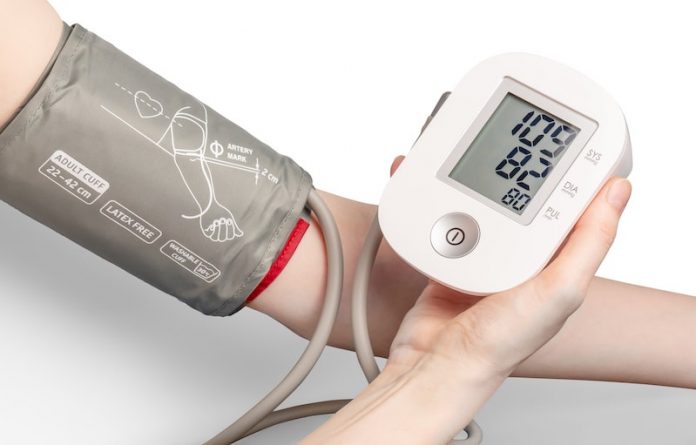
Scientists from the University of Exeter found taking blood pressure readings from both arms and using the higher reading would more accurately capture who has high blood pressure – and is at increased risk for cardiovascular disease and death – than relying on readings from a single arm.
The research is published in Hypertension and was conducted by Christopher Clark et al.
Nearly half of U.S. adults have high blood pressure, also known as hypertension.
Blood pressure is considered high if the systolic reading – the top number – is 130 mmHg or more, or the diastolic reading – the bottom number – is 80 mmHg or more.
High blood pressure is a risk factor for heart disease, heart attacks and strokes.
While current recommendations call for using the higher arm reading, there was previously no evidence in the scientific literature to support the practice, which isn’t routinely followed.
In the study, researchers analyzed medical data for 53,172 adults from 23 studies in countries around the world. Participants were an average of 60 years old.
They found using the lower arm’s reading, compared with the reading from the higher arm, resulted in 12% of people who had hypertension falling below thresholds for diagnosis or treatment of the condition.
Because hypertension also is used to help calculate a person’s risk for cardiovascular disease, missing a diagnosis of high blood pressure can have serious consequences.
Using the higher arm reading, compared with the lower one, researchers reclassified 3.5% of participants – or 645 more people – as at-risk for heart disease.
The researchers reclassified 4.6% of participants – or more than 1,000 extra people – as at-risk for coronary heart disease based on another model.
For both risk scores, using the higher arm readings better-predicted heart illness.
The team says for people whose blood pressure is being monitored at home with an ambulatory device, the monitor should be attached to the arm with the highest reading.
And those who self-monitor should check both arms to see which arm is consistently higher and use that arm for routine measurements.
Taking blood pressure in both arms will take health care professionals more time, but it should be done to provide more accurate readings.
If you care about blood pressure, please read studies about diet that could help reduce high blood pressure, diabetes, and this gum disease may double your risk of high blood pressure.
For more information about blood pressure, please see recent studies about high blood pressure drugs that could increase risk of this heart disease, and results showing plant-based diet may protect you from high blood pressure.
Copyright © 2022 Knowridge Science Report. All rights reserved.



